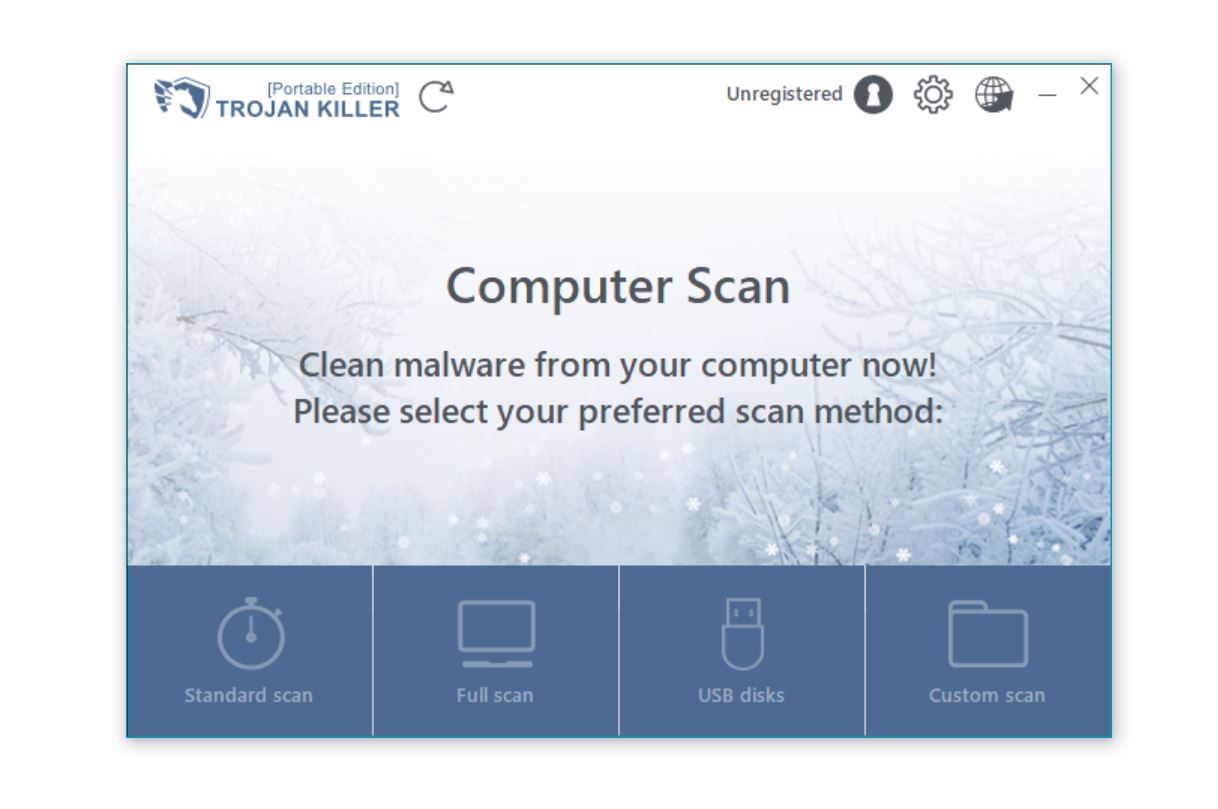Physical Address
304 North Cardinal St.
Dorchester Center, MA 02124
Physical Address
304 North Cardinal St.
Dorchester Center, MA 02124

Trojan Dridex (also known as Bugat or Cridex) is a sophisticated financial malware that targets banking credentials and has caused widespread financial damage. This comprehensive guide will help you understand what Trojan Dridex is, how it infects computers, and most importantly, how to remove it completely from your system using the specialized Trojan Killer tool.
| Common Names |
|
| Type | Banking Trojan, Financial Malware, Information Stealer, Botnet |
| First Detected | 2011 (as Cridex), evolved to Dridex in 2014 |
| Platforms Affected | Windows 7, 8, 8.1, 10, 11 |
| Infection Level | Severe |
| Data Risk | Extremely High – Primarily targets banking and financial information |
Dridex is a sophisticated banking trojan that first appeared as an evolution of the Cridex malware in 2014. It belongs to a family of financial malware designed to steal banking credentials and other sensitive financial information through various techniques, including web injection, keylogging, and form grabbing. Dridex has become one of the most persistent and evolving financial threats in the cybercrime landscape.
The malware operates as part of a botnet infrastructure, with different botnet IDs used to target specific geographic regions or financial institutions. Dridex is primarily distributed through phishing campaigns with malicious Microsoft Office documents containing macros. When these macros are enabled, they download and execute the Dridex payload.
According to the U.S. Department of Justice, Dridex has been responsible for stealing more than $100 million from banking customers and businesses worldwide. Its operators are known to work with ransomware groups, making Dridex infections particularly dangerous as they can lead to subsequent ransomware attacks.
Based on data collected from various cybersecurity reports and our own threat intelligence:
Dridex employs several distribution methods with a focus on social engineering:
Learn more about the general mechanisms of how trojans work and spread to better protect your system.
Watch for these potential indicators of Dridex infection:
Dridex poses several severe risks to infected systems and their users:
Understanding how Dridex compares to other banking trojans helps highlight its specific threat characteristics and evolution in the malware landscape.
Dridex has established itself as one of the most resilient banking trojans, focusing primarily on financial fraud through web injections and form grabbing. Its delivery method has remained relatively consistent over time, primarily using malicious Office documents with macros delivered through targeted phishing campaigns. Unlike some banking trojans that have expanded into general-purpose malware, Dridex has maintained its focus on financial targets, though it has developed connections to ransomware operations. Its command and control infrastructure uses both centralized servers and peer-to-peer communication to maintain resilience against takedown attempts. Dridex is notable for its targeted approach, often focusing on specific geographic regions or financial institutions, and it continues to be actively maintained and developed by its operators.
TrickBot evolved from a banking trojan into a multi-purpose malware platform with more diverse capabilities than Dridex. While both target financial information, TrickBot has expanded further into network propagation and acting as a delivery mechanism for ransomware. TrickBot’s modular design allows it to serve multiple functions beyond banking fraud, including network reconnaissance and lateral movement. Both trojans use web injections to steal banking credentials, but TrickBot has developed more sophisticated lateral movement capabilities. Dridex maintains a stronger focus on financial theft specifically, while TrickBot has become more of a general-purpose attack platform.
Emotet began as a banking trojan but evolved into primarily a malware distribution platform. Unlike Dridex, which maintains its focus on financial theft, Emotet now functions mainly as a delivery mechanism for other malware, including Dridex itself. Emotet’s primary strength is its initial access capabilities through highly convincing phishing campaigns, while Dridex excels at credential theft once on a system. These two malware families often work together in the cybercrime ecosystem, with Emotet providing initial access that subsequently leads to Dridex infections for financial theft.
Zeus (Zbot) was a pioneering banking trojan that established many techniques now used by other banking malware, including Dridex. Both use web injections and form grabbing to steal banking credentials, but Zeus’s source code leak in 2011 led to numerous variants and derivatives. Dridex has incorporated many Zeus techniques while adding more sophisticated evasion capabilities and a resilient botnet infrastructure. While classic Zeus variants are now less common, Dridex continues to be actively developed and remains a significant financial threat.
What distinguishes Dridex in this landscape is its consistent focus on financial fraud combined with its adaptability and resilience. While other banking trojans have expanded their focus or declined in relevance, Dridex has maintained its position as a specialized financial threat for many years through continuous evolution and by establishing connections with ransomware operations.
Trojan Killer is specifically designed to remove complex trojans, including sophisticated Dridex infections:

Warning: Manual removal of Dridex is complex due to its sophisticated persistence mechanisms and anti-analysis capabilities. This approach should only be attempted by users with technical expertise.
Given Dridex’s focus on financial theft, these additional steps are critical after removal:
To protect against Dridex and similar financial malware:
For security researchers and advanced users, here are some technical details about Dridex:
More detailed technical analysis can be found in security research reports from Microsoft’s Security Intelligence Center and other cybersecurity organizations.
Dridex remains one of the most persistent financial threats in the cybersecurity landscape. Let’s address some common questions about this sophisticated banking trojan.
Dridex employs several sophisticated techniques to steal banking credentials and financial information. Its primary method is “web injection” or “man-in-the-browser” attacks, where the malware modifies the content of banking websites as they’re displayed in your browser. When you visit a targeted financial website, Dridex injects additional fields requesting sensitive information such as PINs, card verification values, or security questions that the legitimate site wouldn’t normally ask for. This injected content appears seamlessly integrated with the legitimate website, making it difficult to detect. Additionally, Dridex uses form grabbing to capture data you enter into web forms before it’s encrypted and sent securely, effectively bypassing HTTPS protection. The malware also employs keylogging to record everything you type, screenshots to capture visual information, and clipboard monitoring to steal copied passwords or account numbers. What makes Dridex particularly effective is its ability to target specific banking platforms based on your location, customizing its attack methods for hundreds of different financial institutions worldwide.
Dridex has remained a persistent threat for years due to its sophisticated evasion capabilities. The malware employs multi-layered obfuscation techniques that begin with its initial delivery—macro code in Office documents is heavily obfuscated, making static analysis challenging. Once executed, Dridex uses fileless infection techniques, operating primarily in memory and minimizing its footprint on disk where traditional antivirus might detect it. The trojan performs extensive environment checks before fully deploying, detecting virtual machines, sandboxes, and analysis tools—if any are detected, it alters its behavior or remains dormant. Dridex also protects itself by using process injection to hide within legitimate processes, making its activities appear normal to security monitoring. Its modular approach means the initial infection is relatively small and additional functionality is loaded only when needed, further reducing detection opportunities. Perhaps most importantly, Dridex is continuously updated by its operators, with new versions regularly deployed to counter emerging security measures. This constant evolution, combined with targeted attacks rather than mass campaigns, helps Dridex stay below the radar of many security solutions that rely on recognizing known patterns of malicious activity.
The connection between Dridex and ransomware represents a disturbing evolution in the cybercrime ecosystem toward multi-stage, high-impact attacks. The cybercriminal group behind Dridex, commonly known as Evil Corp or INDRIK SPIDER, operates both the banking trojan and ransomware operations including BitPaymer and DoppelPaymer. This dual operation creates a particularly dangerous attack sequence: Dridex first infiltrates an organization to steal banking credentials and financial data, giving attackers valuable intelligence about the victim’s financial situation and security posture. Once this intelligence gathering phase is complete, the same access is leveraged to deploy ransomware. This approach is particularly effective because the attackers can tailor their ransom demands based on the victim’s financial capacity, as determined through the Dridex banking data theft. Security researchers have documented numerous cases where Dridex infections were followed weeks later by ransomware deployment, demonstrating a clear operational relationship. This connection reflects a broader trend in cybercrime where previously distinct threat categories—banking trojans, information stealers, and ransomware—are converging into integrated attack campaigns orchestrated by sophisticated criminal enterprises with diverse technical capabilities.
Trojan Killer’s effectiveness against Dridex stems from its specialized approach to detecting and removing sophisticated banking trojans. Unlike general-purpose antivirus solutions that rely heavily on signature-based detection, Trojan Killer employs advanced behavioral analysis and heuristic scanning that can identify Dridex’s activity patterns even when the malware’s code signature has changed. The tool is particularly effective at detecting the various persistence mechanisms that Dridex establishes across the system—including registry modifications, scheduled tasks, and injected code in legitimate processes. Trojan Killer’s scanning engine is designed to examine memory space where Dridex often operates, allowing it to detect fileless components that evade disk-based scanners. Additionally, Trojan Killer uses specialized detection techniques for web injection components, identifying and removing the browser modifications that Dridex uses to steal banking credentials. The tool’s removal capabilities are equally important, as it’s designed to safely terminate malicious processes, remove all persistence mechanisms, and clean infected system components without damaging legitimate files. When compared to general security tools, Trojan Killer’s focused approach to banking trojans gives it specific advantages in combating Dridex’s evasion techniques and complex infection mechanisms.
Financial institutions have implemented multi-layered security measures specifically designed to counter sophisticated banking trojans like Dridex. Many banks now employ advanced fraud detection systems that use behavioral analytics and machine learning to identify unusual transaction patterns that might indicate a Dridex-compromised account—such as transfers to unfamiliar recipients or transactions originating from unusual locations or devices. To counter Dridex’s web injection attacks, banks increasingly use out-of-band authentication methods that operate independently of the potentially compromised browser, such as transaction verification through mobile apps or SMS messages. Some institutions have implemented real-time website code integrity checking that can detect when their web pages have been modified by injection attacks. Multi-factor authentication has become nearly universal, requiring something you have (like a physical token or mobile device) in addition to something you know (password). More advanced approaches include behavioral biometrics that analyze typing patterns, mouse movements, and other user behaviors that are difficult for malware to replicate. On the backend, banks regularly update their security teams with the latest Dridex indicators of compromise and use threat intelligence sharing within the financial sector to rapidly respond to new attack techniques. While no single measure can completely eliminate the threat, this defense-in-depth approach has significantly increased the difficulty for Dridex operators to successfully complete fraudulent transactions.